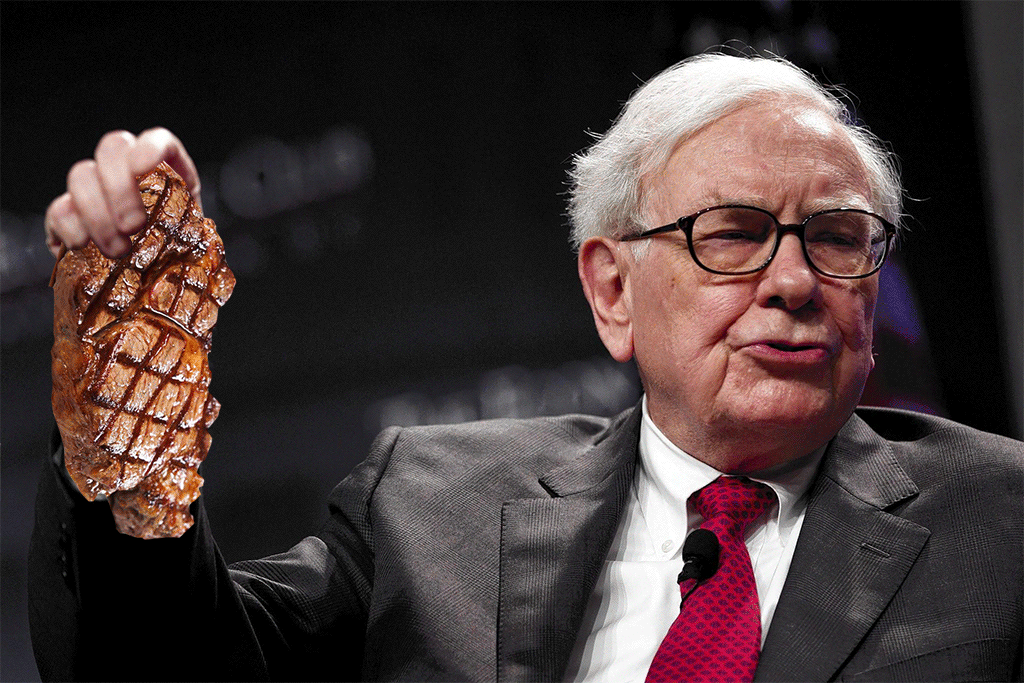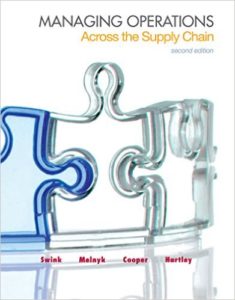Documented mostly for my future reference.
Sunday 8am, track SA36:
-An Empirical Investigation of Network Effects in Automobile Sales by Tianjun Feng, Fuqiuang Zhang, and Peiwen Yu
-The Operational Value of Social Media Information by Dennis Zhang, Antonio Moreno-Garcia, Ruomeng Cui, and Santiago Gallino
-When you work with a super man, will you also fly? An empirical study of the impact of coworkers on performance by Serguei Netessine and Fangyun Tang
-CEO overconfidence and inventory management by Fuqiang Zhang, Tianjun Feng, and Qing Zhang
Sunday Plenary: Cognitive Computing: From Breakthroughs in the lab to applications in the field by Guru Banavar of IBM Research
Sunday 11am, track SB09:
-Biomass Supply contract pricing and environmental policy analysis: an agent-based modeling approach by Shiyang Huang and Guiping Hu
-On the effectiveness of tax incentives to support biomass co-firing by Hadi Karimi and Sandra Eksioglu
-A game-theoretic model of biomass co-firing policies by Sandra Eksioglu and Armin Khademi
-Evaluation of a wind farm project by Metin Cakanyildirim
Sunday 1:30pm, track SC28:
-Dynamic optimization of multichannel advertising campaigns in an online advertising supply chain by Changseung Yoo, Anitesh Barua, and Genaro Gutierrez
-Variability in labor schedules: Effects on store performance and employee turnover by Hyun Seok Lee, Saravanan Kesavan, and Camelia Kuhnen
Sunday 1:30pm, track SC30
-Managerial Attention, Reminders, and the Energy Efficiency Gap by Enno Siemsen and Suvrat Dhanokar
-Does learning from inspections affect environmental performance? Evidence from unconventional oil and gas wells by Suresh Muthulingam and Vidya Mani
Sunday 4:30pm, track SD29:
-Valuing distributed energy resources in electricity system planning: locational benefits and economies of unit scale by Jesse Jenkins
-Combined heat and power production – valuing flexible operation in an uncertain environment by Chritoph Weber
Sunday 4:30pm, track SD28
-Robust Supply function equilibrium in renewable energy markets by Yuanzhang Xiao, Chaithanya Bandi, and Ermin Wei
-An analysis of demand response programs in the wholesale electricity market by Asligul Serasu Duran, Baris Ata, and Ozge Islegen
Monday 8am, track MA35:
-The use of technology to improve engagement through accountability by Gad Allon
-Innovations in teaching operations management at UCLA by Guillaume Roels
-Architecting new business models (in the classroom) by Karan Girotra
-Ideo: Human-centered service design – multimedia-enhanced teaching and learning by Ryan Buell
Monday Plenary: Public health preparedness: Answering (largely unanswerable) questions iwth operations research by Margaret Brandeau
Monday 1:30pm, track MC29:
-Operational response to climate change: Do profitable carbon abatement opportunities decrease over time? by Christian Blanco, Felipe Caro, and Charles Corbett
-Closing a supplier’s energy efficiency gap: The role of assessment assistance and procurement commitment by Quang Dang Nguyen, Karen Donohue, and Mili Mehrotra
-Mind the Gap: Coordinating Energy Efficiency and Demand Response by Eric Webb, Owen Wu, and Kyle Cattani
Tuesday 8am, track TA29:
-Energy efficiency contracting in supply chains under asymmetric bargaining power by Ali Shantia, Sam Aflaki, and Andrea Masini
-An analysis of time-based pricing in electricity supply chains by Asligul Serasu Duran, Baris Ata, and Ozge Islegen
-Investments in renewable and conventional energy: The role of operational flexibility by Kevin Shang, Gurhan Kok, and Safak Yucel
-Explaining the variation in progress in the US nuclear industry by Christian Blanco, Felipe Caro, and Charles Corbett
Tuesday 11am, track TB29:
-Green sourcing – the role of premium sharing and consulting services by Xi Chen
-Inducing prompt disclosure in the presence of evasive effort by Shouqiang Wang, Peng Sun, and Francis De Vericourt
-The adoption of smart home appliance form energy shifting by Wenbin Wang and Yannan Jin
-Incentives for joint product and process improvement under collective extended producer responsibility by Luyi Gui
Tuesday 1:30pm, track TC34:
-Do mandatory overtime laws improve quality? Staffing decisions and operational flexibility of nursing homes by Lauren Lu and Susan Lu
-Predicting Nurse Turnover And Its Impact on Staffing Decisions by Eric Webb and Kurt Bretthauer
-Hospital readmissions reduction program: An economic and operational analysis by Dennis Zhang
Tuesday Keynote: Optimizing the future – supply chain at Amazon by Jason Murray
Tuesday 4:30pm, track TD37:
-The impact of carbon pricing on improving supply chain energy efficiency by Quang Dang Nguyen, Karen Donohue, and Mili Mehrotra
-Quantifying the impact of intermittent renewable generation on German electricity market by Shadi Goodarzi, Derek Bunn, and Syed Basher
-Designing hydro supply chains for water, food, energy, and flood nexus by Kwon Gi Mun, Raza Ali Rafique, and Yao Zhao
-Reversing the death spiral: A new business model for utility firms under social network effects by Safak Yucel, Gurhan Kok, and Kevin Shang
Wednesday Keynote: The goals of analysis are understanding, decisions, and influencing policy by Gerald Brown
Wednesday 11am, track WB31:
-Ethics, Bounded Rationality, and IP sharing in knowledge-based outsourcing by Manu Goyal and Krishnan Anand
-Accurate estimation of retail store traffic from people counters to achieve better conversion by Anup Hanamant
-Mitigating digital discrimination with reviews in the sharing economy: Field evidence from Airbnb by Dennis Zhang, Jun Li, and Ruomeng Cui
-Impact of operational risks in financial organizations by Yuqian Xu, Fangyun Tan, and Sergeuei Netessine
Wednesday 12:45pm, track WC31:
-Rational abandonment from observable priority queues by Philipp Afeche and Vahid Sarhangian
-Design of discretionary service lines: An operational driver of variety by Laurens Debo and Cuihong Li
-Linking Customer Behavior and Delay Announcements: Are Customers Really Rational? by Eric Webb, Qiuping Yu, and Kurt Bretthauer
Wednesday 2:45pm, track WD27:
-The effect of discrete workshifts on non-terminating queues by Robert Batt, Diwas KC, Bradley Staats, and Brian Patterson
-A near-term mortality indicator for terminal cancer patients using high frequency medical data by Donald Lee and Edieal Pinker
-A machine learning approach for personalized health care outcome analysis by Guihua Wang, Jun Li, and Wallace Hopp
-Are patients patient? The effect of universal healthcare on emergency department visits by Diwas KC
Wednesday 4:30pm, track WE32:
-An analysis of world baseball softball confederation premier 12 schedule by Seong Kim and JC Kim
-The role of offensive system in the NBA draft by Ryan Chen, Eli Shayer, Travis Chen, and Nicholas Canova
-Using Past Scores and Regularization to Create a Winning NFL Betting Model by Eric Webb and Wayne Winston
-An optimal pacing strategy for ultramarathons by Kristoper Pruitt and Justin Hill


